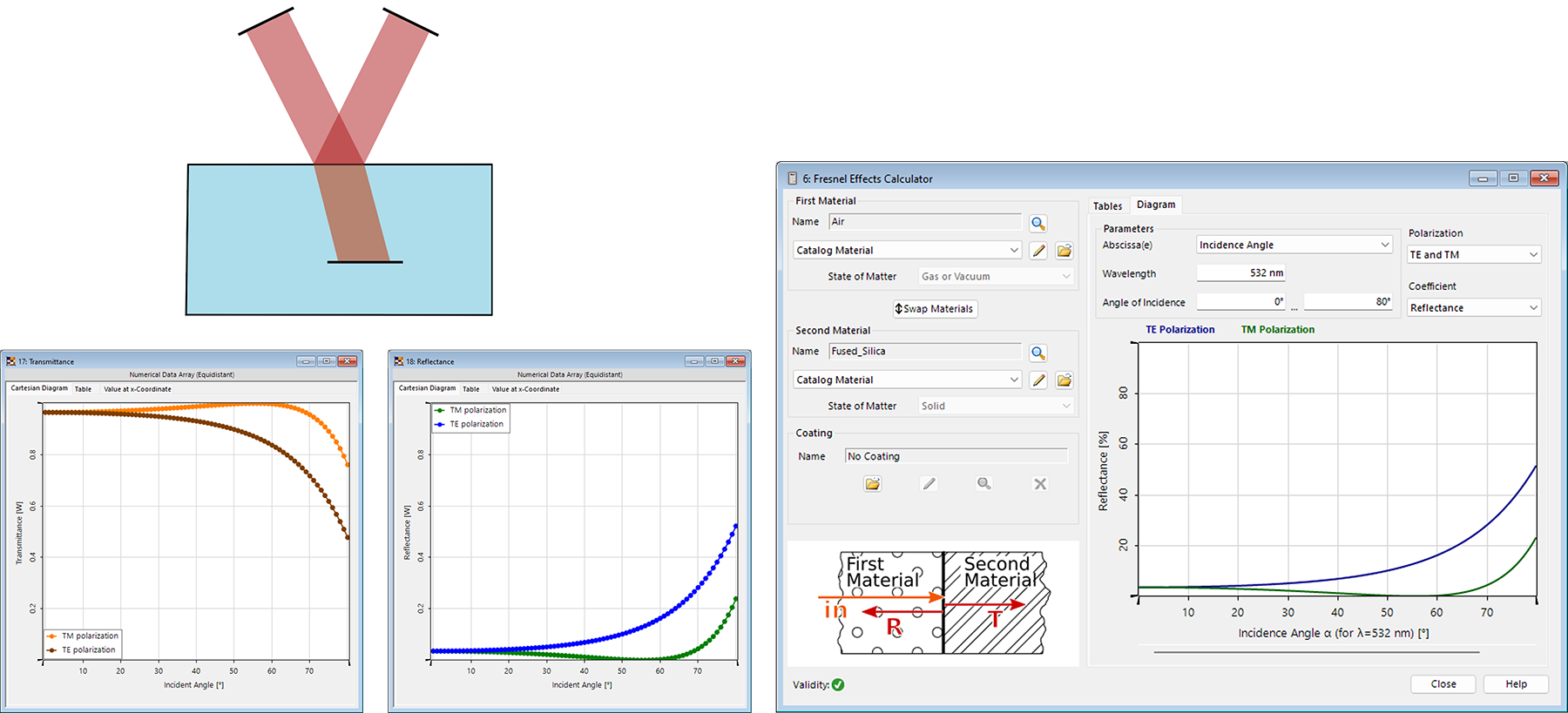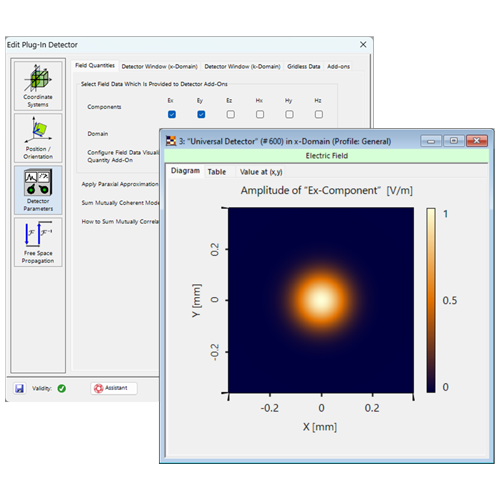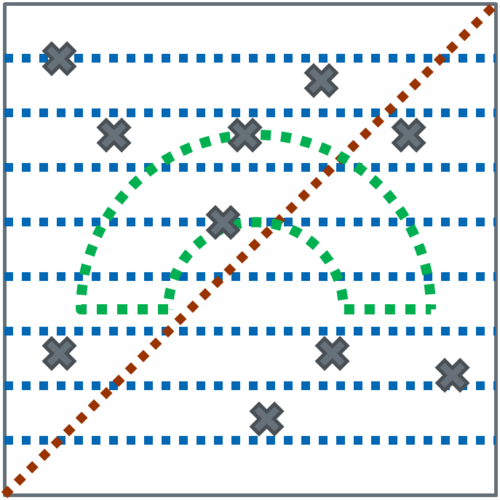Fresnel Curves on a Plane Surface
Abstract
The Fresnel effect, which describes the behavior of transmittance and reflectance of light at an optical transition between two media, was one of the first historical observations to understand the vectorial nature of light. The deduced Fresnel equations enable to calculate the amount of energy being reflected or transmitted at such a material interface, depending on the polarization state and the angle of incidence of the impinging light. As a physical-optics based software, VirtualLab Fusion offers multiple tools to evaluate this, also for modern optics, crucial effect, such as the Fresnel Effect Calculator to calculate the Fresnel coefficients directly and the Universal Detector that measures the radiant flux of the transmitted and reflected light in an optical system.
Downloads
VirtualLab Fusion Configuration
-
 VirtualLab Fusion
VirtualLab Fusion


